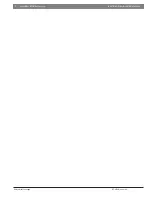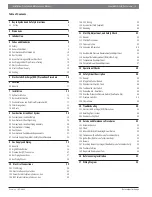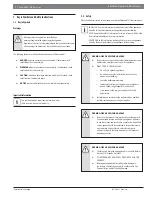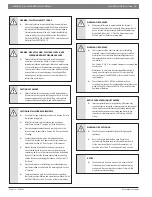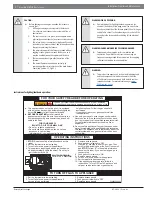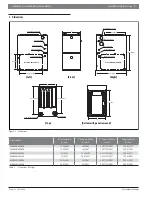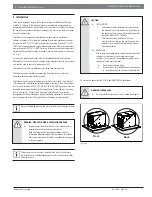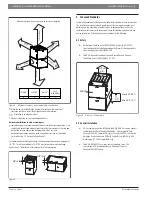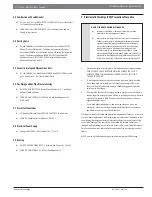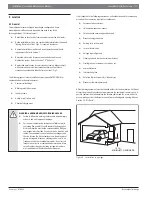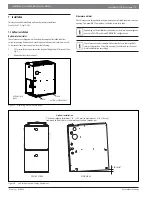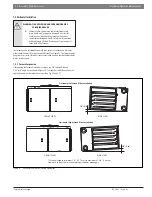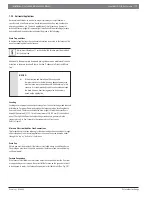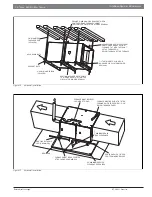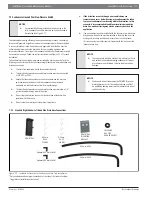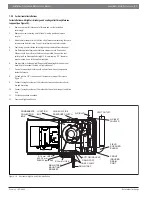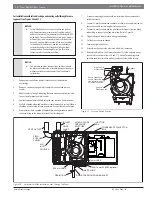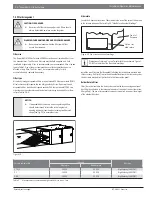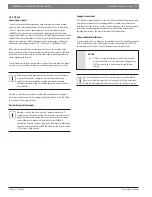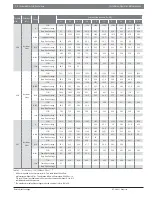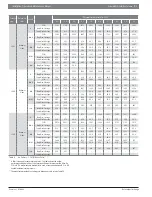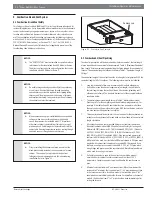
Installation, Operation & Maintenance Manual
E
coer
96%
A
F
UE
Gas Furnace
|
11
E
coer
I
nc
.
|
07-2021
Data subject to change
6 Location
6.1 General
This multipoise furnace is shipped in packaged con
fi
guration. Some
assembly and modi
fi
cations are required when used in any of the
three applications . This furnace must:
Be installed so the electrical components are protected from water.
Not be installed directly on any combustible material other than wood
flooring. Refer to Section 3 Fig 3. for required clearances.
Horizontal installation in attics and crawl spaces have additional
requirements. Refer to Section 7.
Be located close to the chimney or vent and attached to an air
distribution system. Refer to Section 7.5 "Air Ducts".
Be provided ample space for servicing and cleaning. Always comply
with minimum fire protection clearances shown on the furnace
clearance to combustible label. Refer to Section 3, Fig 3.
The following types of furnace installations may require OUTDOOR AIR for
combustion due to chemical exposures:
Commercial buildings
Buildings with indoor pools
Laundry rooms
Hobby or craft rooms, and
Chemical storage areas
WARNING: CARBON MONOXIDE POISONING HAZARD
Failure to follow this warning could result in personal injury
or death, and unit component damage.
Corrosive or contaminated air may cause failure of parts
containing flue gas, which could leak into the living space.
Air for combustion must not be contaminated by halogen
compounds, which include fluoride, chloride, bromide, and
iodide. These elements can corrode heat exchangers and
shorten furnace life. Air contaminants are found in aerosol
sprays, detergents, bleaches, cleaning solvents, salts, air
fresheners, and other household products. Do not install
furnace in a corrosive or contaminated atmosphere. Make
sure all combustion and circulating air requirements are
met, in addition to all local codes and ordinances.
If air is exposed to the following substances, it should not be used for combustion
air, and outdoor air may be required for combustion:
Permanent wave solutions
Chlorinated waxes and cleaners
Chlorine based swimming pool chemicals
Water softening chemicals
De-icing salts or chemicals
Carbon tetrachloride
Halogen type refrigerants
Cleaning solvents (such as perchloroethylene)
Printing inks, paint removers, varnishes, etc.
Hydrochloric acid
Cements and glues
Antistatic fabric softeners for clothes dryers
Masonry acid washing materials
All fuel-burning equipment must be supplied with air for fuel combustion. Suf
fi
cient
air must be provided to avoid negative pressure in the equipment room or space. A
positive seal must be made between the furnace cabinet and the return-air duct to
prevent pulling air from the burner area and from draft safeguard opening. Also see
Section 7.5 "Air Ducts".
Figure 6
18-IN.
MINIMUM TO BURNERS
Installation in a garage


